[one_half padding=”0 0 0 0px”]
Springfield Armory Range Officer 1911
By Wayne Lincourt
[/one_half]
[one_half_last]
![]()
[/one_half_last]
[full_width]
What’s most impressive about the new 9mm Springfield Armory Range Officer is that it’s a gun that’s just easy to shoot well. I was at the range doing some drills at 21 feet and asked a friend if he’d like to shoot it. He’s relatively new to shooting and had never shot a model 1911, but he was eager to give it a try. He took careful aim and put his first shot into the center of the bullseye. His comment? “I like this gun. I really like it!” That about sums it up for me too.
Springfield Armory has been manufacturing forged frame and slide 1911s for more than 30 years. Over that time, the company has become widely recognized for building high quality, value priced guns. In fact, if you want to shoot competitively, its Trophy Match 1911 is a top choice that competes favorably with many custom-built 1911s. Of course, you pay for that level of performance.
With the new Range Officer (RO), the company set out to lower the cost and to produce a gun in the popular 9mm chambering, ready to compete right out of the box. So what did it change from the Trophy Match?
The RO has the same match barrel and hand-fitted barrel bushing as the Trophy Match. The bushing fits tightly to both the frame and barrel for top flight accuracy. The barrel, by-the-way, is a ramped barrel where the ramp is part of the barrel rather than a separate ramp that’s part of the frame. That makes for more dependable feeding.
The RO also uses a long, match grade aluminum trigger, Commander style skeletonized hammer, deep beavertail grip safety with a palm swell for positive engagement, a checkered backstrap/mainspring housing, a lowered and beveled ejection port for more reliable extraction of spent shells, checkered cocobolo grips, a dovetailed front sight, and a fully adjustable rear target sight.
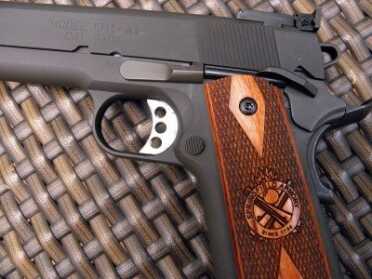
Controls are all where they should be. There’s no checkering on the frontstrap, but I didn’t miss it firing the mild-recoiling 9mm.
So where did they save money to lower the price? The slide and frame are forged carbon steel with a Parkerized finish rather than polished stainless steel. Parkerizing, of course, is a conversion coating similar to bluing but with greater corrosion and wear protection.
Instead of an ambidextrous safety, they went with what the majority of shooters needed – a right-hand safety lever. We lefties, or those who prefer to be able to operate the weapon with either hand, will have to buy and install an ambi safety. For the majority of buyers, it saves money.
The slide serrations on the forward part of the slide were eliminated as well as the checkering on the front strap below the trigger guard. Because the 9mm recoils much less than .45 acp, I didn’t miss the front strap checkering. In any event, should you feel the need for a more aggressive gripping surface, skateboard tape is a cheap and simple solution.
The magazine well is not flared as it is on the Trophy Match, although there are bevels, and there’s no bump pad. The flared well helps increase reloading speed but isn’t essential, especially at the lower competitive levels.
The RO also has a short recoil spring guide rather than a full-length guide rod. The advantage of a full-length guide rod is most apparent where you have a poor slide-to-frame fit. The slide on the RO fits very well both horizontally and vertically. The short guide rod also provides the benefit of being able to cycle the action one-handed. You just press the lower face of the slide, which houses the spring plug, against a flat surface. This is more of an advantage for a defensive weapon than a competition gun, but still worth noting.
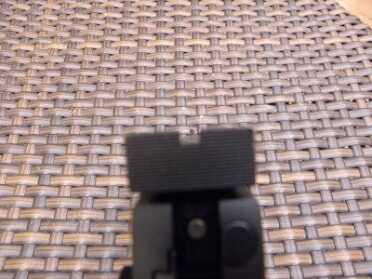
The wide notch at the rear makes finding the front blade easy. (The difference in widths is exaggerated by the camera.)
The rear sight is a target sight, easily adjustable in both windage and elevation. It works against using the RO for a daily carry gun, since the sight could easily snag on clothing. Of course, it would be fairly painless to switch out a low-mount rear sight for concealed carry. With this simple modification, the gun would perform well in either application.
The RO comes in an attractive hard plastic fitted case, complete with a polymer paddle holster, polymer double magazine carrier, cleaning brush and two stainless steel nine-round single-stack magazines. There’s also a zip-lock bag containing keys for the Integral Locking System, as well as an allen wrench for removing the grip panels and a takedown pin to aid in removing the mainspring housing.
This is a full-size (5” barrel), all steel 1911. Weight with an unloaded magazine is 40.6 ounces. Nine rounds brings the weight to about 44.3 ounces. It’s definitely not a lightweight. The other side of the coin, however, is that the weight helps with shooting accuracy as well as recoil reduction. While the 9mm can be quite snappy in a lightweight micro gun, the recoil in the RO is pleasantly soft. That translates into better shootability, quicker follow-up shots where speed is a factor, and less inclination to develop a flinch. Not to mention the lower cost of 9mm versus 45 acp.
The slide is also much easier to manipulate than the slide on a .45 because the 9mm round requires a lighter spring. Women and others with limited hand strength who might not be able to cycle the slide on a .45 will probably have no difficulty with the 9mm. That would make the 9mm RO a great gun for pocketbook carry for women. Just be sure that the gun is secured and held in place, ready to present when needed. Crossbreed Holsters has an excellent holster made specifically for this purpose.
The wide, grooved trigger has a little take-up (which a gunsmith or talented do-it-yourselfer could easily take out if it bothered you) and a clean break at just under six pounds. As your competition level increases, you might want to have a gunsmith lighten that a little. In the meantime, that’s a perfectly workable trigger weight, especially if you have it doing double duty as a concealed carry gun.
At the range, the ergonomics of the 1911 design really came through. It was easy to draw from concealment and point shoot from 21 feet, putting all rounds into the center of mass without using the sights—one benefit of the 5” barrel. As for follow-up shots, the weight of the gun minimized muzzle rise for quick follow-ups. Weight in a handgun can be your friend, especially in competition.
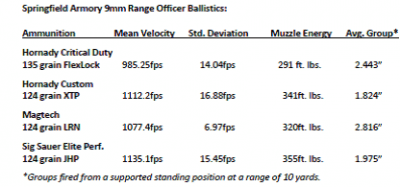
I shot four different loading—a low-priced lead round nose that you would use for typical practice sessions and four premium self-defense rounds. If you’re shooting competitively, there’s a good chance you’ll be reloading to reduce your shooting costs, but you might want to start with some manufactured ammo to give you a baseline.
The range I was using was doing maintenance on their longer range, so I was limited to 10 yards. All four loads performed well, with two standouts—the Hornady Custom 124 grain XTP and the Sig Sauer Elite Performance 124 grain jacketed hollow point (JHP). The Sig Sauer ammo is a brand new product for them, so I was especially interested in how it performed. As is so often the case, the numbers don’t tell all of the story. I actually shot just a little better with the Sig Sauer rounds, with the exception of a couple of fliers that opened up the average group size for the Sig ammo. Of course, I’m not a competition shooter, so my group sizes should be taken as approximations of the capabilities of the ammo. In your hands, you might just shoot much tighter groups. The Hornady and Sig Sauer ammo are both capable of it.

In addition to a rugged fitted case, the Range Officer includes a paddle holster, dual mag carrier, and cleaning brush.
One interesting characteristic of the Sig bullets is that the hollow point is wider at the mouth and tapers quickly to a small central hole. Behind that is another long, narrow cavity to provide controlled expansion and retained bullet weight for better penetration. They call it their “V-Crown” design. They also use a proprietary lead alloy to get proper expansion through heavy clothing, plywood and wallboard. The result is that the bullet looks considerably bigger than the Hornady XTP, which is also a hollow point, although they both weigh the same at 124 grains. Due to its higher muzzle velocity, the Sig round hits just a little harder, which could be a consideration as a self-defense round.
Shooting in excess of 300 rounds at a couple of range sessions doesn’t constitute a true dependability test, but it is still significant that there were no malfunctions of any kind. Given the Springfield Armory reputation for building accurate, reliable 1911s, I have no doubt the new Range Officer will provide many years of trouble-free shooting.
The 9mm Range Officer is a good looking 1911. It shoots the softer-recoiling and less expensive 9mm rounds, and provides out-of-the-box accuracy suitable for competitive shooting. Plus you even get a holster and mag carrier so you can put the gun to use as soon as you get it. All at a street price a little more than half what a Trophy Match would cost. MSRP is $977 but I’ve seen them for sale for around $750. Springfield Armory has been so successful over the years because they really listen to their customers. That’s helped them field yet another winner. Check it out at your local dealer.
[/full_width]
[one_half]

The tight fit of the barrel bushing between the slide and the barrel contribute to the outstanding accuracy.
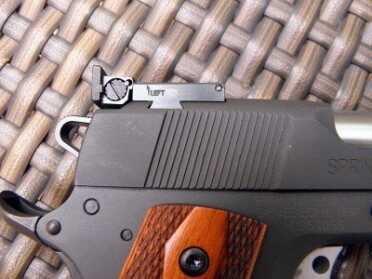
The rear target sight is adjustable in both windage and elevation. Just turn the adjusters with a screwdriver and the spring loaded detents keep your setting locked in.
[/one_half]
[one_half_last]
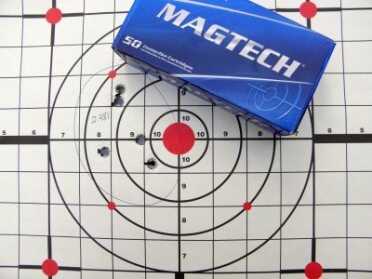
The MagTech groups didn’t open up much compared to the premium brands. The Range Officer, it seems, shoots everything well.

In addition to a rugged fitted case, the Range Officer includes a paddle holster, dual mag carrier, and cleaning brush.
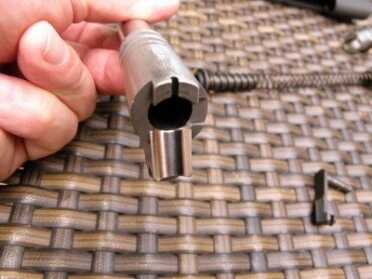
Feed ramp and barrel are combined, a feature which contributes to reliable feeding. The notch at the top of the barrel provides a visual check for a chambered round.
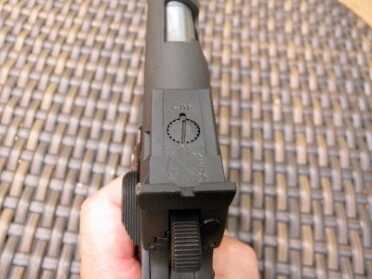
The rear target sight is adjustable in both windage and elevation. Just turn the adjusters with a screwdriver and the spring loaded detents keep your setting locked in.
[/one_half_last]

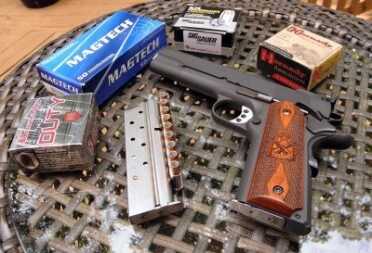

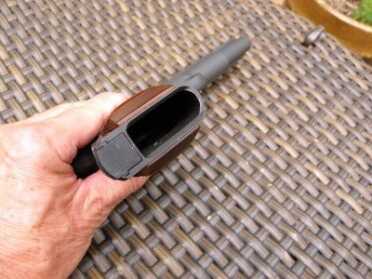
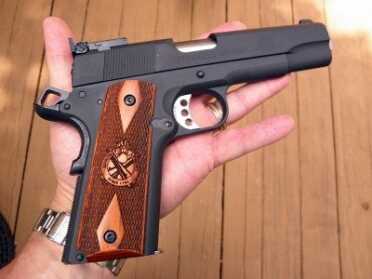
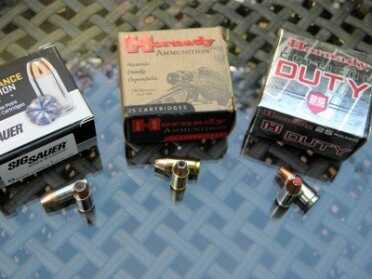
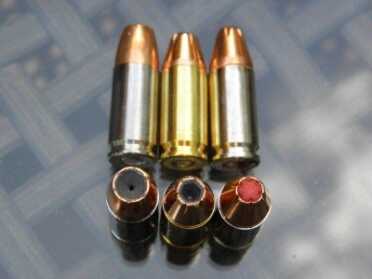

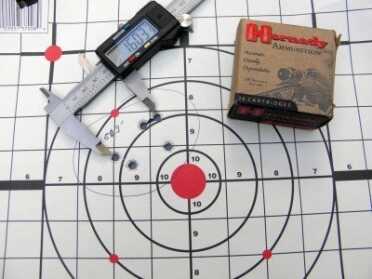
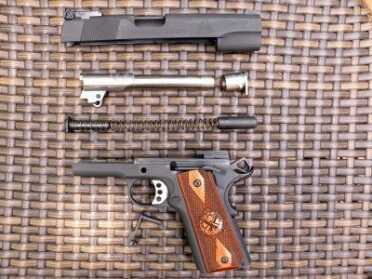
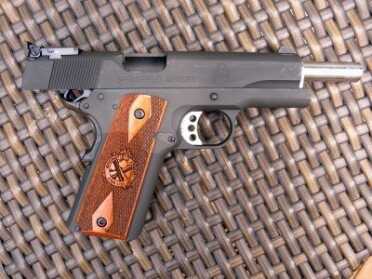
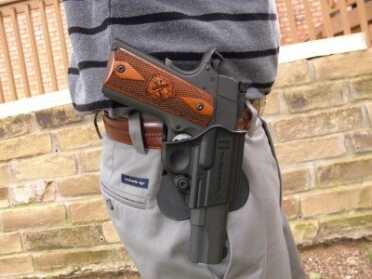


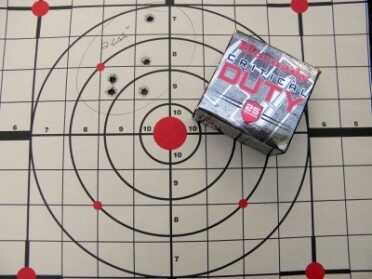
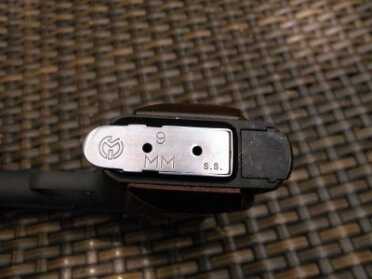
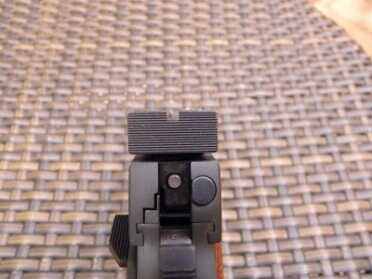
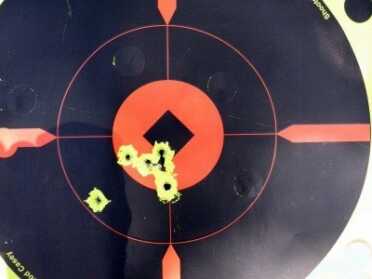
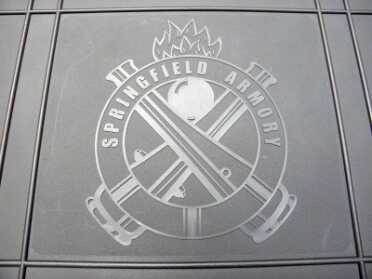
IF I AM GOING TO CARRY A NEARLY THREE POUND SIDEARM I WOULD PREFER TO HAVE IT IN 45 CALIBER. THE ULTIMATE KNOCK DOWN PROVIDER!
While I’m sure this is a good sidearm, for thrE money I got a Kimber eclipse and usually hold a ragged .79 in. Pattern at 15 yards offhand. If supported, it tightens up. There again, personal use and comfort come into play and the Kimber fits me perfectly.
Kimber… one of the least reliable 1911’s with one of the most flamboyant price tags.
Are any of these s.a. 1911 platforms made in the USA?
From what I understand (as told to me by my FFL), some are. I just picked up a new SA EMP 4 which is made in the U.S.
I will be waiting for compact/carry version, hopefully with same materials in frame n NOT “Light-weight” stuff that just makes the gun more difficult to shoot well, fast.
I lucked into a 9mm RO in Feb of this year and have been extremely satisfied with it.
I have had other 9mm’s; but, nothing shot as well as the RO.
I highly recommend getting one if a 9mm pistol is on your list.
Thank you.
the springfield ro 9mm is on the top of my list . i just don’t have a spare grand laying around right now . i called springfield and the lady in the custom department said they would convert the match grade barrel to a threaded one for around 350 bucks . then i can fit a suppressor to the springfield ro 9mm . my dream weapon . your coverage of guns is the best on the internet . i love the fact that i can blow up your images to five times the size of other review sites . great work !
Not bad out of the box, I like the critical duty ammo groups well in my model 92afs.